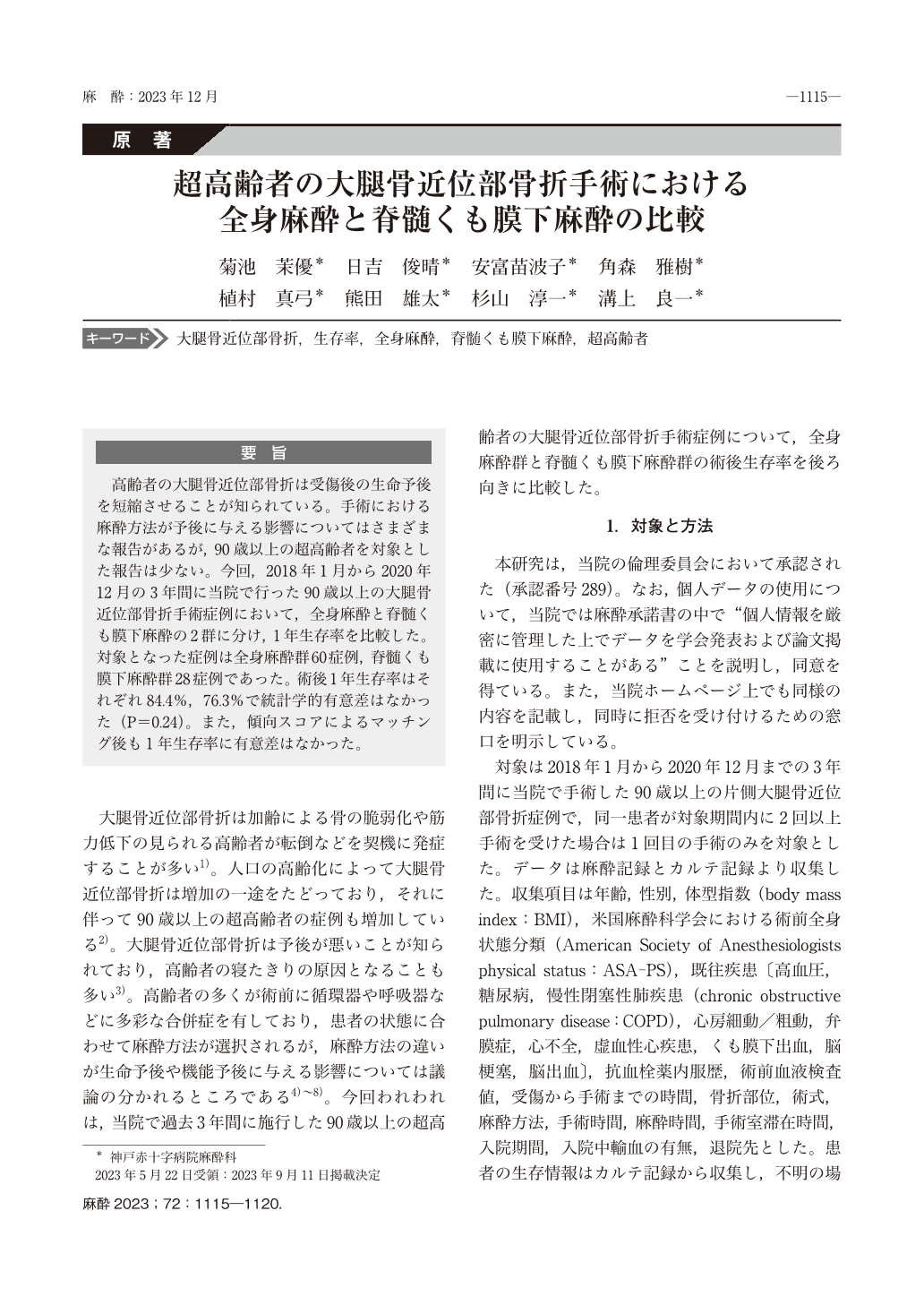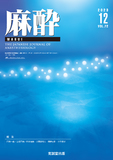Japanese
English
- 有料閲覧
- Abstract 文献概要
- 1ページ目 Look Inside
- 参考文献 Reference
要旨
高齢者の大腿骨近位部骨折は受傷後の生命予後を短縮させることが知られている。手術における麻酔方法が予後に与える影響についてはさまざまな報告があるが,90歳以上の超高齢者を対象とした報告は少ない。今回,2018年1月から2020年12月の3年間に当院で行った90歳以上の大腿骨近位部骨折手術症例において,全身麻酔と脊髄くも膜下麻酔の2群に分け,1年生存率を比較した。対象となった症例は全身麻酔群60症例,脊髄くも膜下麻酔群28症例であった。術後1年生存率はそれぞれ84.4%,76.3%で統計学的有意差はなかった(P=0.24)。また,傾向スコアによるマッチング後も1年生存率に有意差はなかった。
Background:Hip fractures in elderly patients have a serious impact on patients’ functional outcomes and mortality. The best anesthetic technique for hip fracture surgery remains controversial. We investigated whether the type of anesthesia was associated with the 1-year survival rate after hip fracture surgery in a series of ‘oldest-old’ patients, i.e., >90 years of age.
Methods:We included adults>90 years old who underwent hip fracture surgery at our hospital between January 2018 and December 2020. We divided the patients into a general anesthesia group(n=60)and spinal anesthesia group(n=28), and we compared the groups’ 1-year survival rates.
Results:The 1-year postoperative survival rates were 84.4% in the general anesthesia group and 76.3% in the spinal anesthesia group, a nonsignificant difference. There was also no significant difference in the 1-year survival rates after propensity score matching.
Conclusions:In this series of oldest-old patients, there was no significant difference in the 1-year postoperative survival rate between the patients whose hip fracture surgery was conducted with general anesthesia and those whose surgery used spinal anesthesia.

Copyright © 2023 KOKUSEIDO CO., LTD. All Rights Reserved.


